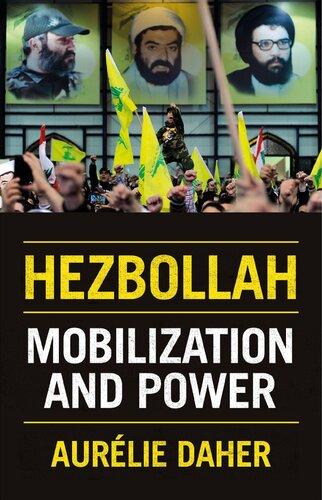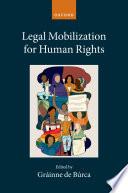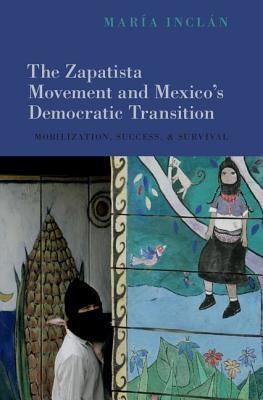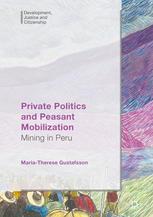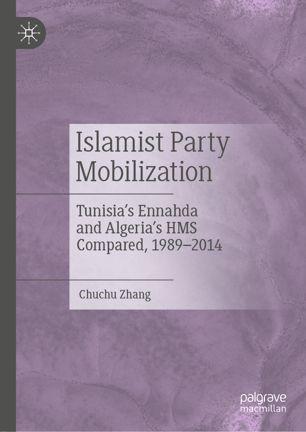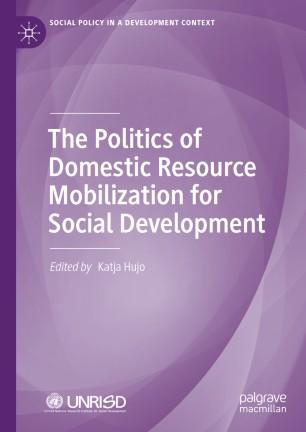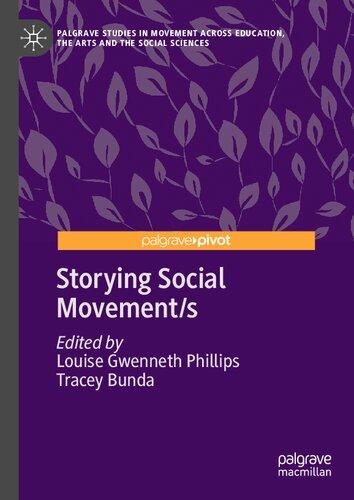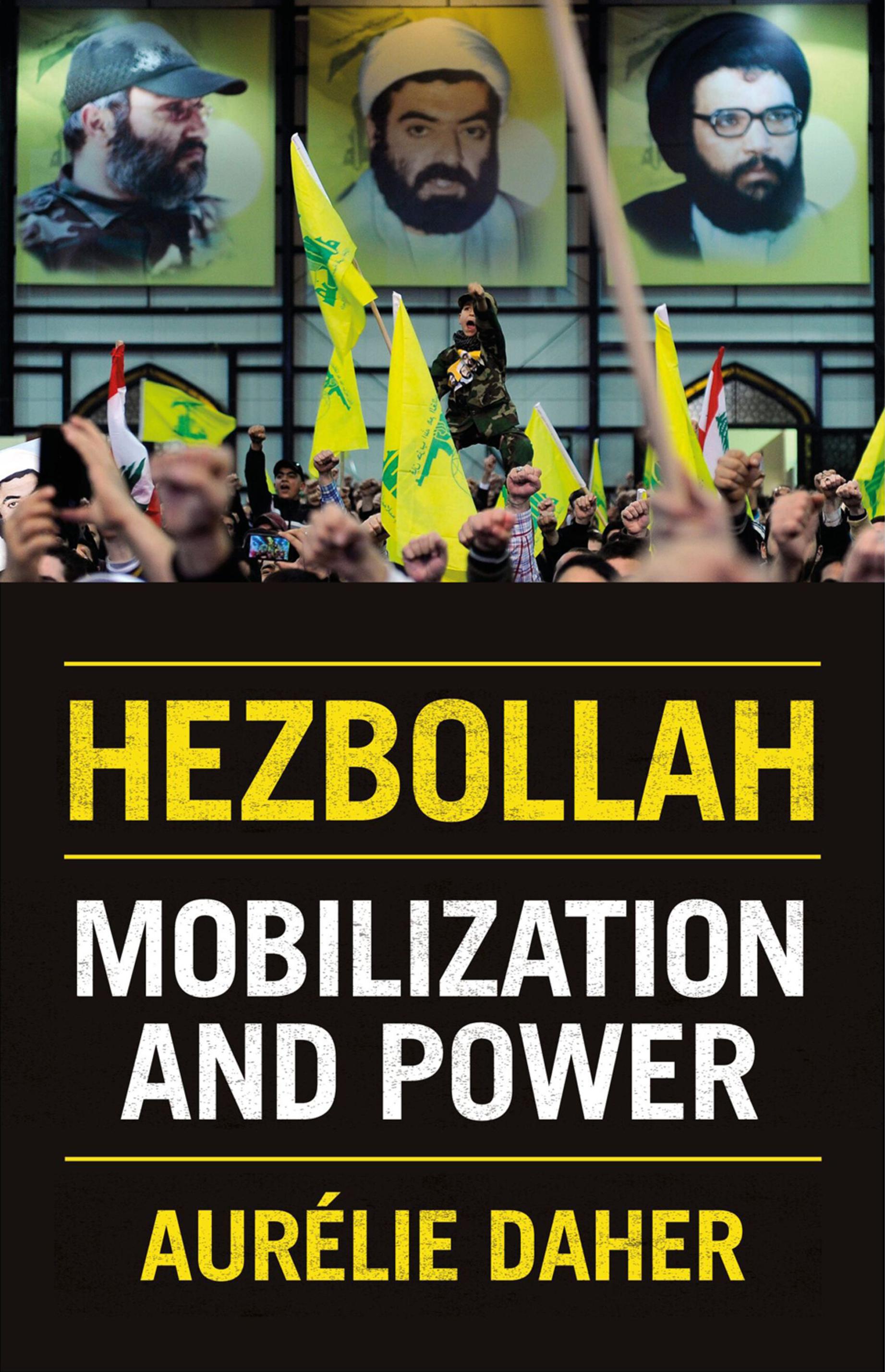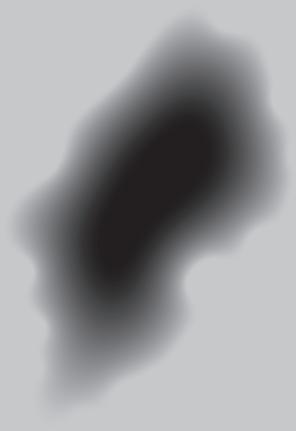Hezbollah
Mobilisation and Power
Translated from the French by H.
W. Randolph
Oxford University Press is a department of the University of Oxford. It furthers the University’s objective of excellence in research, scholarship, and education by publishing worldwide. Oxford is a registered trade mark of Oxford University Press in the UK and in certain other countries.
Published in the United States of America by Oxford University Press 198 Madison Avenue, New York, NY 10016, United States of America
© Aurélie Daher, 2019
Translation by H.W. Randolph ©
First published in the United Kingdom in 2019 by C. Hurst & Co. (Publishers) Ltd
All rights reserved. No part ofPublication may be reproduced, stored in a retrieval system, or transmitted, in any form or by any means, without the prior permission in writing of Oxford University Press, or as expressly permitted by law, by license, or under terms agreed with the appropriate reproduction rights organization. Inquiries concerning reproduction outside the scope of the above should be sent to the Rights Department, Oxford University Press, at the address above.
You must not circulate this work in any other form and you must impose this same condition on any acquirer
A copy of this book’s Cataloging-in-Publication Data is on file with the Library of Congress.
ISBN 978-0-1904-9589-3
To my parents, my sister and my husband—this book is theirs first and foremost.
4.
5.
Internal Organization: Structure, Membership,
6. The Hassan Nasrallah Phenomenon:
PART II
ENVIRONMENT (2000–2015)
7. “New Middle East”, “Cedar Revolution”: Imperilled Gains (2000–2006)
territory?
11”, “The new Middle East”, and “The Cedar Revolution”
8. The Thirty-Three-Day War: the Resistance Put to the Test (12 July–14 August 2006)
9. Escalation, Collapse, and Status Quo (August 2006–January 2011)
10. The Special Tribunal for Lebanon and the Syrian Conflict: Hezbollah
11. Hezbollah in the Eyes of Its Public: Meaning-Making and Mobilization
BOXES, TABLES AND FIGURES
BOXES
Number of projects completed by Jihād al-Bināʾ (1988–2008)
105
Al-ʿAhd trophies won since 2008 113
Al-Nūr and al-ʿAhd/al-Intiqād 115
Israeli army radio messages, summer 2006 207
Report prepared by the UNDP on the Thirty-Three-Day War in Lebanon 217
Excerpts from Walid Jumblatt’s speeches on Hezbollah’s “colonization programme” for Lebanon’s non-Shiite regions
236
Lebanon at war: Lebanese perceptions of the government’s performance 299 Lebanon at war: Lebanese perceptions of the United States 301
Lebanon at war: Lebanese views of Israel and the IRL 302
Commentary in the opposition ranks on the events of May 2008 315
The Lebanese and the Islamic Resistance (February 2010) 321
The Lebanese and the STL (August 2010) 322
Comments by Shiites on “the military arm of Hezbollah” being placed on the European Union’s list of terrorist organizations 324
TABLES
1. Sectarian Composition of the Lebanese Population (1922, 1932, and 1984) 4
2. Principal celebrations observed by Hezbollah 118
FIGURES
1. Hezbollah’s Initial Flag and the Pasdaran’s Flag 53
2. Number of Missions Carried out by IHC’s Civil Defense (1984–2003) 103
3. Vertical Structures of the LCP, AMAL and Hezbollah 129
4. Hezbollah’s Central Apparatus 137
5. Growth of the Lebanese Gross National Debt (1993–2010) 179
Jbeil
Jounieh
Tripoli
Sidon
Tyre
Nabatiyeh
Aley
Jezzine
JABAL AMEL
Bint
Jbeil
Naqoura
ISRAEL
Over 500m above sea level
Zgharta
KESERWAN KOURA
Bikfaya
SYRI A
Qoubaiyat
Hasbaya
Jo r d a n
Bcharré
Zahle
Rashaya
Gola n Height s
Over 1500m above sea level
Baalbek
Hermel
DAMASCUS
SYRI A
Based upon an original map by Elizabeth PICARD. (1988)
REGIONS
International frontier Roads Rivers
Limit of Israeli occupation of Syria since June 1967
Lebanon Relief
Tyre
Sidon
Naqoura
Nabatiyeh
Aley
Tripoli
Zgharta
Bcharré
Qoubaiyat
Bint
Jbeil
Regions with a Druze majority
Regions with a mix of religions
International frontier
Gola n Height s
Rashaya
Zahle
Hermel
Baalbek
Regions with a Sunni majority
Regions with a Shia majority
Limit of Israeli occupation of Syria since June 1967
DAMASCUS
Based upon an original map by Elizabeth PICARD. (1988)
Regions with a Greek Orthodox majority
Regions with a Maronite and Greek Catholic majority
Mt. Lebanon Mutasarrifate up until 1920
Geographic repartition of sectarian communities in Lebanon
Jounieh
Hasbaya
Jbeil
Bikfaya
Jezzine
INTRODUCTION
The assassination of Wissam al-Hassan, the head of Lebanon’s police intelligence services, in October 2012, once again presented an occasion for the Country of Cedars to externalize its internal contradictions and persistently deadlocked political life. The reactions that the drama aroused were too acute to mask a socio-political tension that was blatantly tempted to express itself through violence. To contain the risk of systemic collapse, local actors had only relatively limited room for manoeuvre. Hezbollah, the premier Shiite group and the country’s leading political party, appears to have been at the heart of the security equation. Viewed by some as the number one threat to civil peace, and by others as its sole guarantor, it was nonetheless unanimously recognized as the key player in Lebanon’s stability. Its sometimes organic regional alliances with an Iranian regime hard hit by sanctions from the international community and a Syrian leadership fighting relentlessly for survival warranted the increasingly numerous and pessimistic questions as to the party’s ability to stay secure and sustain itself in its own country. Depending on political preferences, the ensuing conclusions concerning Lebanon’s prospects promised either salutary deliverance or unbridled chaos.
A look at Hezbollah’s history, however, reminds us that this is not the first time that its decline—if not disappearance—had been prophesied. Its participation in the first post-war parliamentary elections in 1992; the liberation of South Lebanon in 2000; the American war against Iraq in 2003; the vote on Resolution 1559 by the Security Council of the United Nations in the autumn of 2004; the Cedar Revolution and Syria’s withdrawal in 2005; the Israeli offensive in the summer of 2006; the clashes of May 2008; the indictment brought by the Special Tribunal for Lebanon; and the bloody events tearing at neighbouring Syria since 2011 all offered occasions for many observers to predict a significant weakening of Hezbollah, if not its outright dissolution. Yet it is clear that this succession of adverse contexts and events has not diminished the organization’s strength, and was even accompanied by an increase in popularity with its public. It is true that eight years after its last military face-off with Israel and six years after the armed confrontation with March 14, Hezbollah found itself in uncharted waters. The Syrian regime, which has been instrumental in the emergence and maintenance of Hezbollah’s regional power, particularly in facilitating its supply of weapons over the years, and in the party’s
dominance on the domestic political scene by helping, to some extent and for a certain period of time, to keep its local competitors in check, was in danger of disappearing. The different groups and actors that were likely candidates to succeed it shared a common animosity towards the party, seen as complicit in the crimes committed by the Syrian authorities against their people. Prospects for close cooperation between the future masters in Damascus and Hezbollah’s leadership looked uncertain. A return to power of the anti-Assad March 14 coalition that Hezbollah and its political allies seemed to have permanently neutralized in January 2011, and also the annihilation of Lebanese armed resistance against Israel, could be envisaged. Were such a reversal to take place on the political chessboard, the distinctive features of Lebanese politics, the traditional rules of the game, and the profound changes it has undergone during the past fifteen years nevertheless indicate that a change in power relations will not come easily. The spirits that drive the day-to-day political rivalry of the pro- and anti-Syrian groups and actors in Lebanon cannot be altered by the mere flux of current events and of regional and international support. The stakes transcend the simple alternation of power, and instead involve the very structure of the country’s socio-political life and identity.
This book aims to provide some answers to these questions about the future of Hezbollah—and, by extension, of Lebanon. The approach chosen here is a study that is both empirical and analytical, and has as its point of entry the mobilization of the party in the country where it originated. Were it to lose certain of its regional assets, Hezbollah must be able to retain sufficient local support in order to preserve its position and strength. More than weaponry, it is the leverage provided by popular mobilization in its home country that will ensure its continued existence. The central issue that frames this book hence is discovering the nature of the relationship between Hezbollah and its public, and identifying both the structural and contextual elements that drive it. This interrogatory cannot find answers by limiting itself to a mere reflection on contextual considerations; it requires a retrospective that is both historical and sociological. In other words, the aim here is not to examine mobilization at a particular time, but to trace the trajectory of the support that an organization derives from a part of society. This is done by identifying that trajectory’s stages and the factors in each that explain the ever-tighter bonds between mobilizer and the mobilized.
Hezbollah’s mobilization and Lebanese politics
At the conclusion of the First World War, the freshly defeated Ottoman Empire was dismembered by the victors. In the autumn of 1918, French and British troops marched into the Levant, ending 400 years of Ottoman rule. The territory of what was soon to become Lebanon fell under French influence. A few months later the Versailles Conference opened, to debate, among other issues, the fate of the fallen
empire’s Arab provinces. A tug of war ensued between the Emir Faisal, son of Emir Hussein ibn Ali, the Sharif of Mecca, allied with the French and British during the war, and the French government: the former hoped to establish an expanded Syria under his authority while the latter wanted to appropriate the Syrian coast. A considerable number of indigenous representatives succeeded one another to press for the Arab option defended by Faisal. But three delegations from Mount Lebanon, most notably the one presided over by the Maronite Patriarch Monsignor Hoayek, in November 1919 succeeded in persuading the French prime minister, Georges Clemenceau, to commit to the creation of a Lebanese state.
Greater Lebanon was born on 1 September 1920. The initial plan was to confine it to Mount Lebanon, the intent being to endow it with as homogeneous a population as possible, in this case Maronite. However, economic considerations quickly pointed up the non-viability of a state comprising a few square kilometres of mountainous terrain, poorly suited for agriculture, deprived of all access to the coastal ports and far from the great Syrian and Palestinian trading cities. Future Lebanon’s borders were therefore expanded to encompass Mount Lebanon, Mount ʿĀmil, which extends them to the south, the coastal strip flanking them, the Bekaa Valley in the north-east, and the rises on the western flanks of the Anti-Lebanon Mountains and Mount Hermon.
This expansion of the borders had wide-ranging consequences for the country’s sectarian make-up. Lebanese society consisted of seventeen different religious communities.1 In the early 1930s Christians of all faiths slightly outnumbered their Muslim compatriots, comprising 51.2 per cent of the population. The Maronites were the leading Christian community (28.8 per cent of the population), followed by the Greek Orthodox (barely 10 per cent). Among the Muslim communities, the Sunnis predominated (22.4 per cent of the population), followed closely by the Shiites (19.6 per cent), and the Druze (6.8 per cent). Faced with this religious mosaic, the French mandatory authorities opted to make Lebanon a republic organized according to a special political system called “confessionalism”, summed up as a division of powers between communities. Enshrined in today’s Constitution, especially in Article 95, it was initially specified by the National Pact of 1943, a verbal agreement between representatives of the Maronites and the Sunnis, the two major communities at the time. Under it, the position of president of the Republic was reserved to the former, that of prime minister to the latter. The speaker of the parliament was to come from the Shia community. Seats in parliament were distributed by a ratio of six Christians for every five Muslims. The seats were then reallocated by community within each of these two major groupings, and by district.
Until the 1980s, the political history of Lebanon was summed up by two (redundant) struggles. The first pitted the Maronites, much favoured by the sectarian distribution of political resources, against the Sunnis, who, supported by the Druze, some Shiites and Christians, were increasingly insistent on sharing these resources more
equitably. A second embroiled the Maronite leaders in a fierce intra-sectarian race for the community’s top leadership position.
The challenge brought by the Muslim groups was energized all the more by demographic changes that by all indications were trending to their advantage.2 Fifteen years of fratricidal war (1975–90) led to a redistribution of power in favour of the country’s Muslim communities, particularly the Sunnis. If the Taef Agreement, ratified by Parliament in August 1990, sealed the end of the civil war, it also recast the political system. Parliamentary seats were thenceforth equally distributed between Christians and Muslims, and executive power devolved mainly to the Council of Ministers. The prime minister, constitutionally required to be a Sunni, is now the country’s de facto main political leader.
Table 1: Sectarian composition of the Lebanese population (1922, 1932, and 1984)
Official census 1922 Official census 1932 Private estimate 1984
Source: Michael Johnson, Class and Client in Beirut, New Jersey, Ithaca Press, 1986, p. 226.
But the demographic changes that Lebanon’s population has been undergoing since then, which favour the Shiite community, for a long time ranked third among the denominations in terms of political power and precedence, put into question the power-sharing system entrenched under the Taef Agreement, a system that has become increasingly less representative of the society’s confessional composition. The distribution of seats in parliament grants thirty-four seats to the Maronites, twentyseven to the Sunnis, and twenty-seven to the Shiites. In percentage terms, this means that 26.5 per cent of parliamentary representation accrues to the first and 21 per cent each to the second and third. Yet some private studies estimate that Shiites make up a minimum of 40 per cent of the Lebanese population.3 In a country whose political system gives priority to the majority community at the expense of the majority opinion, the numerical growth of the Shiites cannot continue without eventually causing
a profound change in the rules of the game. Sooner or later, the distribution of power currently in force will be seriously questioned. The formulations, proposals, and practices put forward by some political actors already suggest that a large portion of them is well aware, either with enthusiasm or regret, of the ineluctability of such a reform. Whether the transition to a new distribution of power is achieved by peaceful and fruitful negotiations between the various protagonists, or whether it will result from several years of violence as in 1975, the Shiite community will undoubtedly be central to the process.
This is all the more so since, for over thirty-five years, it has been the natural breeding ground for Hezbollah, an organization that differs significantly from the traditional political structures and that, for the past twenty years, has served as catalyst for a profound change of identity in its community of origin. To understand the future of Lebanon requires understanding both Hezbollah’s nature and the foundations of its relationship with the community. From this perspective, a first observation imposes itself. The mobilization orchestrated by Hezbollah pertains to three categories. The first is military. As will be amplified shortly, Hezbollah is a socio-political apparatus dedicated to defending the interests of an armed organization, al-Muqāwama al-Islāmiyya fī Lubnān (the Islamic Resistance in Lebanon (IRL)). Mobilizing in the Hezbollah sense primarily means enlisting recruits for armed combat against the Israeli occupier. But this mobilization effort is also designed to convince the Lebanese people to support the Resistance, morally and practically, whenever necessary; in this sense, it is a political mobilization. Finally, in seeking to forge a new culture that would constitute the identity of what the party refers to as mujtamaʿ al-muqāwama (resistance society), Hezbollah seeks to secure the maintenance of this support and its durability through a socialization effort. This brings with it deep-going changes in Lebanese society that exceed the party’s original political mobilization aims: the mobilization is therefore also social in nature.
According to Hezbollah, with the established term of ta ʿbiʾ a the party’s official language picked up the Persian bassidj, literally meaning mobilization. The Iranian Islamic Revolutionary Guards, better known as the Revolutionary Guards or Pasdaran, in fact played a key role in the creation of the IRL and the former’s structural organization served the IRL as a partial model. Terms specific to the Iranian Revolution, such as mustakbir (arrogant, as applied to the imperialist regimes), mustadʿaf (disinherited, referring to unfree or impoverished people), al-Shaytān alakbar (the Great Satan, that is, the United States), and al-Shaytān al-asghar (the Little Satan, or Israel) were at one time and, on occasion, are still noticeable in Hezbollah rhetoric. But rather than argue about the meaning that the Iranian revolutionaries gave the concept in the late 1970s or early 1980s, it is more pertinent to focus on the meaning given to ta ʿbiʾ a by the members of Hezbollah, who are Lebanese and who, for the most part, are unaware of the Iranian revolutionary origins of the vocabulary they use.
In Arabic, the term ta ʿbiʾ a has both the meaning of military mobilization—i.e. conscription—and political or social mobilization. It refers simultaneously to recruitment and the militant state. It defines men ready to do battle, but also the party base or the active members of an association or organization. Hezbollah militants use the concept to describe both the process of recruiting fighters and the civilian grass-roots members. They expand it by a third dimension: by ta ʿbiʾ a they also mean the call on society to support the Resistance. The most frequently used explanatory terms are tahdīr and istiʿdād, translatable respectively as preparation and availability (for). Thus, the party, using the first concept, says that it works to conscientize the public and, with the second, that it expects that public to react positively to this “raised consciousness”, to include standing ready to answer the call. To summarize: mobilization, within Hezbollah’s meaning of the word, covers the recruiting of both fighters and members, attracting sympathizers to itself, and the seducing of minds. It relates to time in a dual fashion: it seeks to encourage involvement in immediate and concrete action shoulder to shoulder with the organization and its cause, while it also pursues socialization of the public in anticipation of a potential, future availability for action. Logically, the term implies persistence through time: the goal is to be able to count on a general investment in action alongside the Resistance whenever the party requires it. As a corollary, anyone who is active in the ranks of Hezbollah (or IRL) or who is in the right frame of mind to answer the call becomes the mobilized. This includes party members, cadres, and grass-roots activists, as well as followers, whether active regularly or occasionally.
A fresh look at Hezbollah and its mobilization
A sine qua non condition for grasping the significance of a relationship based on mobilization and a correct appreciation for the sources from which the agreement between mobilizer and mobilized springs requires a deep knowledge of both. The literature on Hezbollah extant today suffers from undeniable shortcomings. Chronologically, the party was the subject of study by (Western) intelligence services before it became one for sociology. In defence of the researchers who took it on in the 1980s, it must be said that the organization was essentially clandestine at the time, and balked at being approached by observers. Two types of texts were the result, both problematic. One type chose to democratize data obtained primarily from the intelligence services; the other, preferring to limit itself to a strictly academic examination of the subject, contented itself with flawed information which most often had been passed through the distorting prism of the studied object itself. In all cases, the reading derived from them is incomplete and less than reliable. This is all the more so because the intelligence agents, like the researchers, did their basic research in the capital when the process that should have been observed at that time was taking place in the rural north-east. The 1990s and the opening of the party to outside observers
at that time unfortunately were not seized as occasions for revisiting the previous work in order to provide a more solid picture of Hezbollah. When research did address new aspects of the party, it was built on the extant versions. It was not until the mid-2000s that a new generation of junior scholars, the vast majority emerging from the French academic system, started revisionist work—in the positive sense of the word—on a Hezbollah whose discourse, developments, and practices increasingly challenged the earlier analyses that had been elevated, for want of anything better, into time-honoured classic and immutable versions. Unfortunately, for reasons to be clarified shortly, from 2006 on, the party chose to shut its doors to external observation and study, making it no easy task once again to gain an appreciation of it.
The presentation of Hezbollah in this book is part of this new effort to question the original study of an organization that has always been viewed as enigmatic. Undeniably, I have had the privilege of being able to cast a dual look at Hezbollah, from both inside and out, thanks to a family history that has allowed me to live in the North Bekaa region, which is key for the history and identity of my subject, although I was not born there. By having been fully integrated into the local society in which I spent part of my childhood and my teenage years in the 1980s and 1990s, by returning to it regularly during a succession of long university vacations, and by residing there between 2006 and 2010, I had a unique and precious opportunity to closely observe first the early stages, then the consolidation, and finally the rise to power of an organization that is today the major actor on the Lebanese political stage and a protagonist of the Middle East game that cannot be ignored. If I began my thesis work with an exhaustive reading of the extant literature, I placed greater reliance for my assertions on years of participant observation, hundreds of interviews with highly placed as well as ordinary members of Hezbollah, with followers of various confessions and from diverse ideological and militant backgrounds, and various critics with differing motivations and grievances. Finally, I benefited from the support that my work received from other witnesses to Hezbollah’s rise, who had the useful and generous idea of supplying me with historical documents—tracts, militant writings, and posters—or who simply shared memories with me whose contents are not common knowledge. These comprise all the elements that made possible for the picture of Hezbollah that I present here to coalesce, but above all from which originate any solidity, richness, and originality to which this work may eventually lay claim. I am infinitely grateful to all these acquaintances, these friends, these actors, and these observers.
What is Hezbollah?
Is the Islamic Resistance Hezbollah’s military arm?
Used by analysts, political scientists, and observers of the Middle Eastern scene, the term Hezbollah frequently reflects an encompassing approach, covering both the military apparatus and the totality of the civilian, social, or political institutions linked to
the party. When the effort is made to differentiate these components, the Resistance (al-Muqāwama) unambiguously denotes the military apparatus, but, remarkably, the term Hezbollah is then used again to refer to the party’s civilian organization: the noun Hezbollah is therefore used to designate both the non-military part of the organization and the organization in its global dimension (civilian and military). This confusion between an entire organization and parts of it reveals how observers understand the hierarchical and organizational relationships within Hezbollah, a misunderstanding betrayed by now commonplace formulas that present the Islamic Resistance as “the military arm of Hezbollah” or “the armed wing of Hezbollah”.
This representation of Hezbollah as an Islamist party possessed of a subordinate militarized appendage collides with the reality of an organization of a totally different nature. The socio-historical reality of the Hezbollah complex requires an inverse reading of the organizational and functional relationships between the Resistance and Hezbollah. The Islamic Resistance in Lebanon is not Hezbollah’s military arm: Hezbollah is the socio-political arm of a military organization, the IRL. Indeed, the latter is not a paramilitary structure ready to intervene on the Lebanese scene to implement decisions emanating from the civilian leadership of the organization. Actually, the secretary-general of Hezbollah is fundamentally a military leader who supervises the work of a civilian4 leadership team dedicated to ensuring, on the social and political level, all of the support and the popular base that the IRL needs to sustain itself.
Definition of an “Islam of resistance”
Hezbollah is generally defined as an Islamist organization. The establishment of political Islam in Lebanon would be the original template for its paradigms, and resistance against the Israeli occupation would constitute one of its practical applications. Yet it appears that while the Hezbollah ego is not lacking the religious dimension, this dimension did not assume meaning, and to this day has had no effect other than as a vector for a different original value: that of resistance. Hezbollah brings together a collection of people mobilized primarily around the idea of refusing the Israeli occupation (and any form of “oppression”—dhulm—in general). For this group, Islam, among other referents, acts as a guarantor of the legitimacy of the principal cause.
If we define Islamism as an effort directed towards Islamizing a political system, we need to note that Hezbollah’s political practice has never aimed at such outcome, even a partial one. Since the late 1980s, the party has during its demonstrations ceased to evoke the notion of an Islamic regime, a theme moreover that the party’s parliamentary members have never sounded in either their public or parliamentary activities. If the mobilization discourse of the party and its social practice actually employ religious referents, does that by itself make Hezbollah an Islamist party? This choice of the party to take no action towards an Islamization of the Lebanese political system, or of part of it, therefore leads to a bias in favour of concepts such as militant
Islam, Islamic militancy, and Islamic currents/movements at the expense of those of Islamism or Islamist. Admittedly, Lebanon’s multi-sectarian socio-political context, in which the Shiite community has only made its voice heard effectively for a few decades, goes a long way towards explaining Hezbollah’s difficulty in practising activism of an Islamist nature. It is no less true that an internal sociology of the party confirms this suggested division of roles between Islam and military jihād, that is, between Islam and the resort to arms. In the eyes of Hezbollah’s leadership, Islam seems not to be an ultimate goal that could be achieved by means of armed struggle, but inversely is a means in the service of armed struggle for a thoroughly temporal cause. In this way, Hezbollah embodies what I will call an “Islam of resistance”. Whereas, for certain Islamist groups, weapons are in the service of an Islamization of society or of a political regime, Hezbollah’s practices and religious referents are in the service of its arms.
How does it sustain its mobilization?
A mobilization of the clientelist type?
Though extremely popular, the argument that the support provided by the Syrian and Iranian regimes is the true driver of Hezbollah’s success deserves to be qualified and relativized. Two dominant ways of conceiving of this support must be rejected. The first makes Hezbollah into a satellite of its regional mentors, stripped of room for manoeuvre or its own priorities, that will be consistently armed and financed in exchange for obeying the orders of its two sponsors. The second does not bother to qualify the nature and importance of this support by period. Proponents of the regional support argument too often neglect to draw the distinction between the nature of the aid provided by Damascus and that provided by Tehran, only rarely differentiating the types of relations existing between Hezbollah and each of its two allies. In the Iranian case, the analysis requires making an additional effort of qualification by differentiating the sources or poles of authority at their origin (religious power, political centres). In particular, the linkage between Iranian financial aid and Hezbollah’s mobilizing power, which, in practice, involves social action by Iranian parent institutions attached to the party (the Islamic Charitable Relief Association, Foundation of the Martyr, Foundation of the Wounded, and Foundation for the Construction Effort), is often cited as the main reason for the success of its mobilization. Unquestionably, this argument is overblown. Without denying that Hezbollah’s social welfare apparatus plays a role in sustaining its mobilization, clientelism is not its source. The virtue of this network of social institutions resides in producing a benevolent public image of the party: objectively rather ineffective in its financial support to the needy, this social action apparatus presents a front, a showcase, and serves the mobilization less by assuring it of self-interested allegiances than by playing on the ethical referents of the society to which it addresses itself.
Thwarting external destabilization
In this connection, the relationship between Hezbollah and its public is strongly influenced or reinforced by the positions as well as social and political practices of the Other, an actor external to the mobilization under examination here. In Hezbollah’s case, we can distinguish between three Others: the national Other, embodied since 2005 in the March 14 movement; the regional Other, represented by the state of Israel; and the international Other, epitomized by the international community. The Other’s discourse, schemes, and, especially, “errors” as perceived by Hezbollah’s public do play a not inconsiderable role in sustaining Hezbollah’s mobilization over time. In bipolarized settings such as the political chessboard that is Lebanon and the regional arena as perceived in Lebanon, the game is zero-sum: each gain by one side is a loss for the adversary and vice versa. One camp’s accumulated difficulties and defeats comfort the other with the notion that it finds itself “on the good side of the barricade”. Dwelling on rival mobilizations therefore will also have its uses for the present analysis, since they illustrate how certain obstacles that they cannot surmount play a role in reinforcing Hezbollah’s popularity.
Mobilization over time: a new society
Independent of what Hezbollah’s leaders have been able to devise or plan, groups of militants active inside the party’s various institutions, just like followers who are ready to approve its action or position-taking, impart a meaning to their support that they themselves define. Thus, mobilization—in part—gets away from Hezbollah to become the property of its public. Set up as clients free to take or leave what makes sense to them in the party’s discourse, the public discards one part and reprocesses another. It is a piece of luck for Hezbollah that its public has not only integrated certain representations that the leadership wanted to convey to its followers, but that this public has appropriated some of this meaning in the form of enduring identity markers, in turn infusing the mobilization with a new general significance that works in the party’s favour.
More than any other factor, this reworked meaning of the mobilization is today the principal guarantor of Hezbollah’s popularity. It is much more interesting that the Shiite partisans and followers, inserted into a society that is subject to influences other than just Hezbollah’s, have hybridized the referents of identity and belonging and unwittingly become vectors for change in their community. With the Shiites expected to represent an increasingly substantial part of the Lebanese population, Hezbollah’s mobilization has, without prior planning, set in motion profound, widespread social change that is nothing less than the prime mover in a makeover of the whole society—and of its national identity.
Mobilization over time
Studying mobilization and reception
With these empirical hypotheses posited, the choice of a theoretical framework becomes easier to make. Social science offers a rich corpus of theories and methods dedicated to the study of mobilizations, under the heading of “social movement theory” (SMT). It usually treats mobilization as a moment of collective expression or action that requires identifying the prior conditions, mechanisms, and resources used in structuring it and in making it happen, as well as identifying the contexts and opportunities that allowed its action to be staged. Mobilization is therefore conceived of as a phenomenon at the end of a chain where various processes geared to concretizing a collective action come to a head. The key question is how the structures necessary for its existence are set up and activated. Most often, the argument retraces the history of the deployment of resources and the launching of action, and how they are articulated. The time line is short or limited, shrunk to the juncture of the moment before the mobilization crystallizes and the moment when it goes into action. The question of how it maintains itself over time, however, is ignored in the vast majority of cases.
In a quasi-systematic manner, observers who try to account for Hezbollah’s mobilization dwell on the contents of its discursive production (speech, prose, and events) or its media, pointing a finger especially at al-Manār as the engine that aligns the minds of the Shiite community to the party’s modes of representation. Without denying that the public is not insensitive to Hezbollah’s discourse, three points need to be stressed in this regard. First, the party’s followers, just like the rest of the Lebanese population, have other sources of representation than this single discourse. Next, sustaining Hezbollah’s mobilization does not preclude parallel allegiances and cross-affiliations. Hezbollah is not the sum total of the Shiite community, which had a prior history and has experienced other political, ideological, and spiritual adventures than this one alone—and it continues to do so. The community has at its disposal other referents, other sources of values, representations, and perspectives than simply those that the party tries to instil. Finally, it needs to be said that a mobilization is not a one-way top–down relationship running from mobilizer to mobilized. Hezbollah’s public is not a docile receptacle for what the party would like to inculcate: it is itself a vital actor in the mobilization’s evolution. Admittedly, the public carries it but also reshapes, reorients, redefines, and transforms it, giving mobilization an intensity that the party never planned, or even expected. Mobilization is also a bottom-down process.
An approach that focuses on the moment of onset of Hezbollah’s mobilization and on the process of attraction towards the mobilizer that it culminates in is therefore inadequate. To begin with, the examination of this mobilization consists less of understanding isolated moments of action than of grasping the underpinnings of a
collective loyalty that remains intact despite adverse circumstances. Rather than determining the reasons for grouping together for a demonstration, for instance, what should be sought out are the reasons accounting for an enduring loyalty over time. The factors that explain a gathering at a moment in time may turn out to have limited effect when it is a long-term relationship that should be decoded instead. Furthermore, an approach focused on identifying the resources intentionally used by the mobilizer is also too limited. Compensation with resources—of whatever nature—of the mobilized by the mobilizer is not what links Hezbollah and its public. Things become that much more complicated when, as mentioned earlier, the mobilized is never the perfectly malleable object of the mobilizer.
These two points represent a first set of reasons that argue for a “cultural” approach, i.e. one favouring sense and meaning (a meaning-making approach) over one simply identifying resources rationally injected by the mobilizing actor to gain the attention of the mobilized group (resource mobilization theory (RMT)). The real objective here is to identify and expose not issuance but reception.
Recognizing the role of “unforeseen” elements
In addition, a major advantage that the meaning-making approach provides but that the RMT approach lacks is that it fully accounts for the power of the environment to shape and sustain the mobilization. Admittedly, RMT does not ignore the environment or context-linked political opportunities, but they are employed as explanatory elements only if in the form of a resource identified as such by the mobilizing actor, which he uses consciously and deliberately. RMT falls short by not acknowledging everything the environment injects into the mobilization whose effect the mobilizing actor has neither the chance to evoke nor to prevent. A meaning-making approach, by contrast, permits factoring in the environment’s power to affect the mobilization either in a positive or negative manner independent of the mobilizing actor’s will. This effect impacts the mobilization by the unconscious intermediation of the mobilized, because, just like the mobilizing actor, the environment also moulds the representations and values of the mobilized group, creating the risk of disharmony between them and the representations disseminated by the mobilizing actor. The mental constructs championed by the mobilizing actor and those promulgated by the environment can therefore rival each other at any moment in the minds of the mobilized group. These minds are thus perpetually a site where these occasionally antagonistic representations may clash with each other. Explaining how a mobilization succeeds in sustaining itself over time thus necessitates observing what transpires in this competitive space in order to identify how, over time, potentially destabilizing representations are dismantled by being confronted by representations redounding to the benefit of the mobilizing actor. This only a meaning-making approach is able to accomplish.
Favouring “sources of perception”
If the identification of resources injected into a mobilization by the mobilizing actor is not a foolproof method, conversely a simple description of the mobilized public’s representations will not suffice. This does not mean simply ignoring the mobilizing actor as other studies have done with the mobilized group; it calls for studying their interconnection. The method applied here is conceived as having three stages. The mobilizing actor will be presented in a descriptive manner, i.e. as what he is, what he says, and what he does. Next to be captured is the universe of meaning of the mobilized group where it touches on the mobilizing actor, so that then we can retrieve from among the objective elements emanating from the latter what has had or not had a grouping effect. Finally, and of most interest, we will observe how elements put at the public’s disposal by the mobilizing actor were reprocessed syncretically by this public in a framework where other elements issuing from the environment—but also from the group’s passing or internalized experiences, its code of ethics, and its identity—are employed, and generate new mobilizing elements that even the public is not conscious of.
R ather than seeking the resources that went into the mobilization, the question throughout this work will therefore be what sources of perception permitted it to exist, and especially to sustain itself. They offer the advantage of dispensing with the rational intentionality of resources without removing the objective dimension of the elements issuing from the mobilizing actor. They thus reference substance that is emitted consciously or unconsciously, intentionally or not, by the mobilizing actor and which has a positive impact on mobilization—whether it is in its “rough” form as emitted or in a form reprocessed by the public. Sources of perception also preserve an advantage over the resources concept by acknowledging the positive elements emitted by the mobilizing actor and identified as such not by him but by the public.
Structure of the argument
This work is articulated in two epochs. The first section presents both a history and sociology of the Islamic Resistance in Lebanon and of Hezbollah, from their creation to the liberation of the southern part of the country in 2000. It was indeed in 2000 that the original mission was accomplished and the problem arose of how to sustain a mobilization whose raison d’être no longer seemed to exist. The first section therefore provides a description of the IRL and of Hezbollah, but also exposes the original wellsprings of their mobilization. Four types of elements play a part in its crystallization and maintenance between the 1980s and 2000 whose effects persist in subsequent years regardless of the evolving contexts. The first consists of the successes and accomplishments of the IRL’s tug-of-war with the Israeli army (Chapters 1, 2, and 3). The network of Hezbollah’s social and welfare organizations constitutes the second
type (Chapter 4). Next comes Hezbollah’s organizational structure, designed to guarantee the soundness of the internal edifice (Chapter 5), and, last, there is the charisma of the third secretary-general, Hassan Nasrallah, which progressively became one of the mainstays of the party’s mobilization (Chapter 6).
The book’s second, more chronological, section places the relationship tying Hezbollah to its public into an evolutionary framework in order to show how the relationship resists adverse contexts over time. Subdivided into four periods marking out the great reorientations of the Lebanese political context on the one hand and the major inflection points spotted in the development of the representations and state of mind of Hezbollah’s public on the other, it explicates a Lebanese and regional current state of affairs centred on the IRL and the party: from the time of the Syrian tutelage and the Syrian withdrawal of 2005 (Chapter 7) to the summer 2006 war (Chapter 8), passing through the implosion of the internal scene in May 2008 (Chapter 9) to Hezbollah’s assuming power directly in January 2011 and its positioning in the face of the Syrian crisis (Chapter 10). The section is capped by a final chapter (Chapter 11) focusing on the party’s public, particularly the Shiite community. Dedicated to examining the development, in parallel with Hezbollah’s, of both the politically and identity-oriented representations of its followers, it describes what they have retained of the sources of perception to which they were exposed over the years and how they appropriated them.
